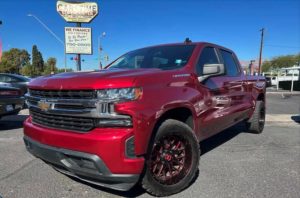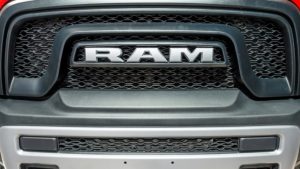The truck market is evolving rapidly, driven by diverse factors. From construction to food services, trucks are essential.
Understanding these trends is crucial for industry stakeholders. It helps in making informed decisions and staying competitive.
This article delves into various truck segments, including dump, food, and class 8 trucks. Each segment has unique trends and challenges.
We will explore market growth projections and regional highlights. Insights into sales trends and technological advancements will also be covered.
Stay tuned for a comprehensive analysis of the truck market. Discover how these trends impact the commercial vehicle industry.
Overview of the Global Truck Market
The global truck market is witnessing substantial growth. Increased demand for commercial vehicles is a key driver. Significant changes are reshaping this dynamic sector.
Key growth factors include:
- Rise in e-commerce
- Infrastructure development
- Technological advancements
Globally, North America and Asia-Pacific lead in innovation and sales. Europe focuses on cutting emissions and boosting efficiency. Rapid industrialization propels the Asia-Pacific market forward.
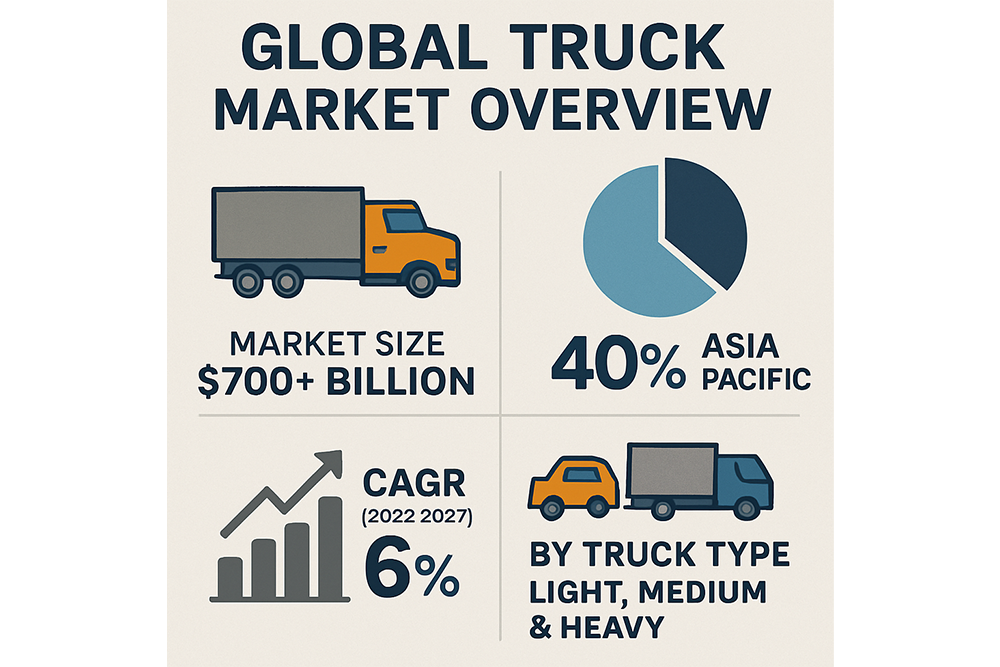
Markets are evolving with a shift towards electric and hybrid vehicles. This is partly due to regulatory pressures for greener alternatives. These trends ensure that the market remains vibrant.
Key players continuously adapt to these changes, focusing on sustainability. These evolving market conditions present both challenges and opportunities for stakeholders. Understanding this landscape is vital for future success.
Key Segments: Dump, Food, Class 8, Boom, and Pickup Trucks
The truck market comprises diverse segments. Each segment has unique trends and challenges. Let’s explore some key segments.
Dump truck market trends show a rise in construction projects. These trucks are vital for transporting heavy materials. Growth in infrastructure fuels their demand.
Food trucks are gaining popularity, especially in cities. People love convenient, gourmet street food. This trend enhances the food truck market.
Class 8 trucks, crucial for freight, show robust demand. Increasing transportation needs boost their market growth. They’re vital for long-haul operations.
Boom trucks benefit from infrastructure development. They’re essential in construction and utilities. Their versatility makes them indispensable in various projects.
Pickup trucks remain a favorite for their versatility. Consumers seek fuel efficiency and adaptability. Pickup truck market trends reflect these preferences.
Key segment drivers:
- Construction activities
- Urbanization
- Freight transportation
- Infrastructure projects
- Versatile vehicle demand
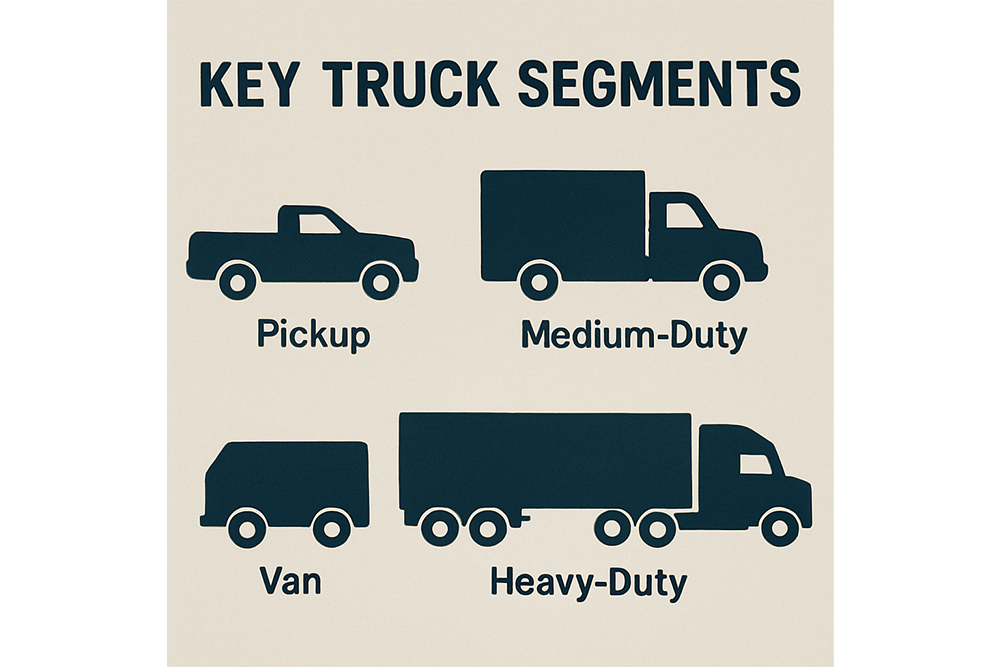
Understanding these segments helps stakeholders make informed decisions. Each segment’s growth is fueled by specific factors and consumer needs. Recognizing these can provide a competitive edge in the truck industry.
Commercial Vehicle Insights and Sales Trends
The global truck market is on a recovery path post-pandemic. Sales trends indicate a strong rebound, with growth driven by innovation and technology. Consumers and industries now seek sustainable and efficient vehicles.
Commercial vehicles are shifting towards greener technologies. Electric and hybrid models are gaining traction as environmental concerns rise. Companies are investing in eco-friendly fleets to meet regulatory standards and consumer expectations.
Key sales trends shaping the market include:
- Recovery in truck sales post-pandemic.
- Adoption of electric and hybrid models.
- Demand for fuel-efficient commercial vehicles.
- Rising interest in autonomous trucks.

The demand for technology-driven trucks is transforming market dynamics. Fleet operators focus on reducing emissions while maintaining efficiency. These insights provide a clearer picture of the evolving commercial vehicle landscape, guiding future investments and strategies.
Market Growth Projections and Regional Highlights
The truck market is forecasted to see robust growth over the next decade. This trajectory is fueled by various sectors expanding and advancing. Demand is particularly strong in regions experiencing rapid industrialization.
Different regions exhibit unique growth patterns. North America leads with innovation in electric trucks. Asia-Pacific, with its booming industry, is emerging as a key player. Meanwhile, Europe focuses on reducing emissions and enhancing efficiency.
Market growth projections include:
- Significant sales increase in North America.
- Expanding market share in Asia-Pacific due to industrial growth.
- European market efforts to meet emission standards.
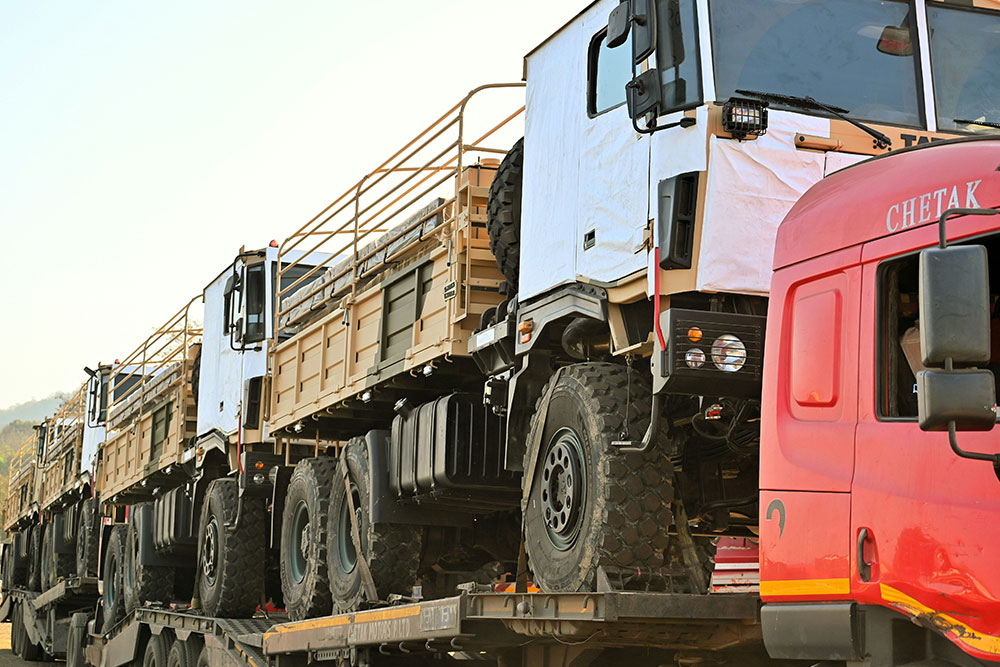
Regional strategies are adapting to market demands and economic shifts. This dynamic environment allows manufacturers to tailor solutions to different challenges. As a result, the truck market continues to evolve, addressing both environmental and economic needs effectively.
Used Truck Market Trends and Opportunities
The used truck market is gaining momentum due to cost efficiency. Businesses seek affordable transportation solutions amidst economic challenges. This demand shift has increased competition within the market.
Opportunities abound for dealers and manufacturers focusing on this niche. Quality used trucks with lower emissions appeal to cost-conscious buyers. Technological advancements also increase used truck value and sales potential.
Key opportunities include:
- Increased consumer interest in eco-friendly and economical options.
- Enhanced resale value with technological upgrades.
- Strong growth in emerging markets seeking affordable solutions.
Overall, the used truck sector provides a viable path for sustained growth. As environmental regulations tighten, demand for greener used trucks will continue to rise, providing further avenues for market expansion.
Technology and Innovation Shaping the Truck Market
Technological advancements are revolutionizing the truck industry. Innovations like electric powertrains and autonomous driving are redefining operational efficiencies. Such changes are crucial for addressing environmental and logistical challenges.
Electric trucks are becoming more popular due to their low emissions. Autonomous driving technologies promise further efficiency in logistics. The integration of these technologies is key to future growth.
Key technological innovations include:
- Electric and hybrid powertrains
- Autonomous driving systems
- Advanced telematics and connectivity
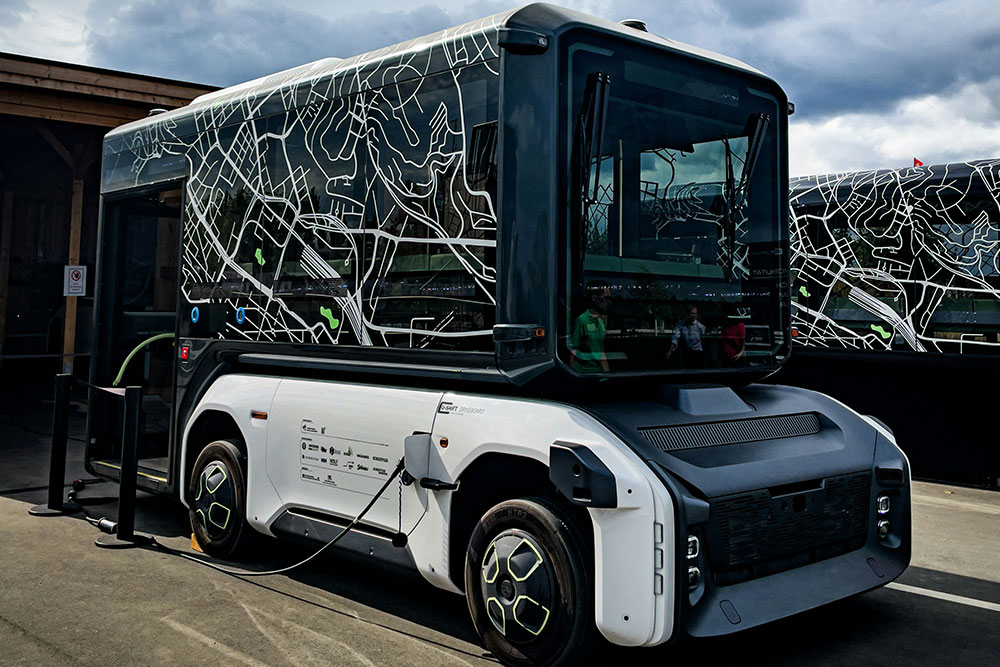
New technologies enhance performance, safety, and sustainability. They also align with regulatory pressures and consumer expectations. The industry is poised for transformation as these technologies evolve, offering exciting possibilities for the future of trucking.
Regulatory, Economic, and Environmental Influences
The truck market is significantly influenced by regulatory frameworks. Governments worldwide are imposing stricter emission standards. These regulations drive the shift towards greener vehicles.
Economic conditions also play a crucial role. Fluctuating fuel prices impact operational costs and pricing strategies. Moreover, economic downturns can lead to reduced demand and sales. Environmental concerns are reshaping industry priorities. Manufacturers are investing in sustainable technologies to reduce carbon footprints. The focus on eco-friendly solutions is becoming a key industry driver.
Key influences include:
- Stricter emission regulations
- Economic fluctuations and fuel price volatility
- Environmental sustainability initiatives
These influences pose challenges but also offer opportunities for innovation and growth. As these factors evolve, they will continue to shape the future landscape of the truck market.
Future Outlook: Challenges and Opportunities Ahead
The future of the truck market is filled with both challenges and opportunities. Technological advancements and regulatory changes are creating a complex landscape. Manufacturers must adapt quickly to succeed.
Several challenges face the industry, but opportunities for growth and innovation are present. Adapting to new technologies, customer preferences, and sustainability trends is essential.
Successful navigation of these changes will define future market leaders. Key points to consider include:
- Embracing technological innovations
- Addressing stringent environmental policies
- Meeting changing customer expectations
Balancing these factors will be crucial. The truck market’s future promises dynamic shifts that will shape the industry for years to come.

There are good reasons people will buy their next used car in Tucson from Car Time Supercenter. But I think we are one of the most trusted used car dealerships mainly because we treat everyone like family. My family has provided quality, dependable local used cars to Tucson customers since 1984, and I’m proud to be a part of our continued success.
Like many family-owned businesses, I grew up going to work with my dad. Falling in love with cars was natural because of my father’s passion, and eventually, I came to love the car business just like him. I officially joined the Car Time Supercenter team in 2012, starting in the finance department. Over the past decade, I’ve learned the used car business and how to treat customers from my family and industry resources.
Today, I oversee marketing, social media, inventory, and reconditioning, so I play an essential role in delivering local Tucson used car buyers the best experience possible. I also help our family business keep up with the times while providing old-fashioned customer service. From attending NADA classes to becoming Allstate certified for back-end products, I continue to learn and add skills to serve our customers better.

